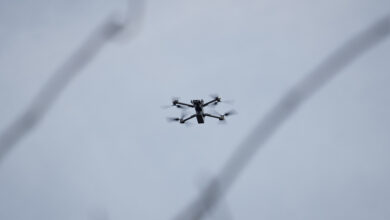The US Air Force has successfully integrated a US Navy Harpoon missile system onto an F-16 Fighting Falcon during a test at Nellis Air Force Base, Nevada.
The test team used a gateway system to enable communication between the Harpoon and the F-16 without modifying either platform.
The gateway system acted as a “translator,” allowing the combat jet to recognize the missile and transmit commands.
By using this approach, the US Air Force’s 53rd Test and Evaluation Group streamlined the integration process, reducing the time required to equip the aircraft with new weapon capabilities.
“The execution of this test event showcases a viable pathway for rapidly integrating advanced weaponry onto existing platforms, potentially transforming traditional timelines that previously spanned several years,” the US Air Force explained.

Harpoon Missile
The Harpoon is an all-weather, long-range anti-ship missile developed by Boeing, designed for both air and ship launches.
It has a diameter of 13.5 inches (34.3 centimeters) and weighs approximately 1,160 pounds (526 kilograms).
The missile’s length varies by configuration, measuring 182.2 inches (4.63 meters) for ship-launched versions and 151.5 inches (3.85 meters) for air-launched versions.
It relies on mid-course guidance and an active radar seeker to track and engage surface targets.
The Harpoon can be launched from ships, submarines, shore batteries, and aircraft.
It is also compatible with Air Force B-52H bombers, which can carry up to 12 Harpoons.
In 1998, the Harpoon Block II upgrade introduced GPS-assisted inertial navigation, enhancing both land attack and anti-ship capabilities.












